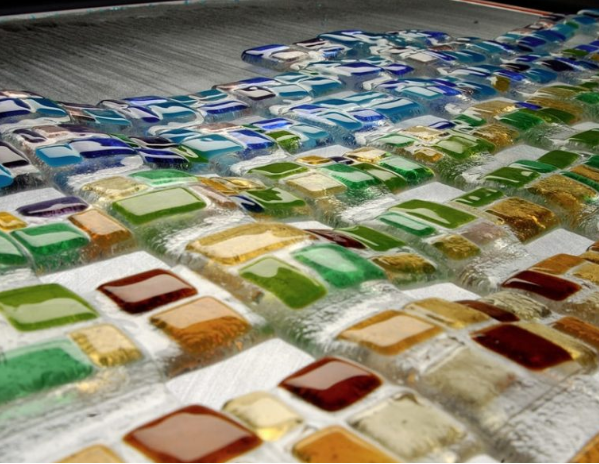A Closer Look At Decorative Glass
What Is Fusing Glass? – Glass is synonymous with versatility. It can be reinforced, reshaped, laminated, and fused. This explains why glass is popular among artists and designers especially for interior design and architecture. Glass companies all over the world are currently developing new ways to work with glass.
There are several techniques for handling glass that can be used for both functional and decorative purposes. These include; laminated, stained, UV-printed, and fused glass. In today’s blog, let us take a closer look at Glass Fusion; its procedures and different applications.
A Brief History
Glass fusing can be traced back to ancient Egyptians. Archeological evidence suggests that early Egyptians were familiar with the technique. However, a number of historians argue that it was the Romans, who started developing the technique. During the 1st Century AD, glass fusing was the primary method for creating minuscule glass objects. Fast forward to the 21st century, glass fusing has gained popularity for its aesthetic value and versatility.
What is Glass Fusion?
As the name implies, glass fusion is simply combining two or more pieces of glass under high temperatures. Pieces of glass are pressed together to create a single seamless piece.
Glass companies use glass fusion to produce decorative glass panels with layered pieces that come in a variety of patterns and colors.
Glass Compatibility
The pieces of glass to be used in fusing should be compatible for them to be fused properly.
There are several ways to determine the compatibility of two or more pieces of glass. When fused together, the incompatible glass may not be able to maintain its structure.
In addition, the fused glass is likely to shatter when cooled down or develop fractures than may eventually result in breakage. In general, all glass companies rate glass compatibility before performing fusion to ensure high-quality output.
The Process of Glass Fusing and Application
Although simple, the process of fusing glass can be time-consuming. Pieces of glass are heated in a kiln. And depending on the size and power of the kiln, heating the glass may take time. The first thing that glass companies do is designing.
After the design is completed, the type of glass to be used is gathered. It could come in different colors and textures depending on the design. After this, the glass is cut into patterns corresponding to the design made.
The pieces of glass are then placed inside the kiln to be heated and fused. The heat needed to fuse glass varies depending on which type of glass is used.
Typically, glass companies have huge kilns that can combine together pieces of fused glass to create a single glass panel. The possibilities are endless, making room for creativity and design capability.
Much like other glass techniques, glass fusing can be used for decorative purposes. It can be used for doors, window installations, indoor panels, furniture, and statement pieces. More complex fusing techniques can also be employed to produce functional pieces such as plates, vases, and bowls. From classic hand-made pieces assembled by artists to modern panels created using the latest technologies, Mirodec is proud to offer glass fusing and a full range of other techniques possible in the world of decorative glass and mirrors.

